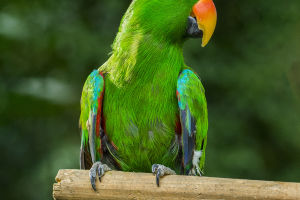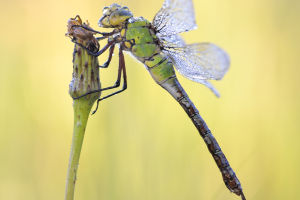The lynx, a magnificent and elusive feline, has long captivated the imagination of wildlife enthusiasts and nature lovers alike. With its distinctive features and exceptional hunting skills, this stealthy predator is a creature of intrigue.
Let’s delve into the fascinating world of lynx, uncovering some intriguing facts about their behavior, habitat, and unique adaptations.Species and Distribution:
The lynx belongs to the Felidae family and is divided into four main species: the Eurasian lynx, the Canadian lynx, the Iberian lynx, and the bobcat. Each species boasts distinct physical characteristics and inhabits specific regions of the world. The Eurasian lynx thrives in Europe and Asia, while the Canadian lynx is found in North America. The Iberian lynx, unfortunately, holds the title of the world's most endangered cat species and is native to the Iberian Peninsula. Lastly, the bobcat, more adaptable and widespread, can be spotted throughout North America.
Physical Characteristics:
The lynx's appearance is a testament to its prowess as a predator. With its muscular build, long legs, and distinctive tufted ears, it stands out among other feline species. Lynx are medium-sized cats, with males weighing up to 40 pounds (18 kilograms) and females generally smaller. Their coats vary in color, depending on the species and geographic location, ranging from reddish-brown to gray. The fur is thick and dense, perfect for cold climates, and often includes beautiful patterns and spots, aiding in camouflage.
Hunting Techniques:
Lynx are well-known for their exceptional hunting skills. With their keen eyesight and acute hearing, they excel at detecting prey in their woodland habitats. Lynx primarily feed on small to medium-sized mammals like rabbits, hares, and rodents. Their powerful hind legs enable them to make impressive leaps, covering great distances in pursuit of prey. Their hunting technique involves stealthy stalking, followed by a sudden pounce to capture their unsuspecting victim. Interestingly, their elongated facial whiskers help them detect slight vibrations in the environment, aiding in pinpointing prey.
Habitat and Adaptations:
Lynx are creatures of the forest, typically found in temperate and boreal regions. They thrive in dense woodlands with ample cover, where their camouflage helps them blend seamlessly into their surroundings. Their large, padded paws serve as snowshoes, allowing them to navigate deep snow effortlessly. Additionally, their long hind legs aid in traversing uneven terrain and leaping to great heights.
Conservation and Threats:
While some lynx populations are stable, others face significant challenges. The Iberian lynx, for instance, is critically endangered due to habitat loss, reduced prey availability, and road mortality. Conservation efforts, such as captive breeding programs and habitat restoration, are underway to protect and increase their numbers. The Canadian lynx, on the other hand, faces threats from climate change, which affects the availability of their primary prey, the snowshoe hare.
The enigmatic nature and adaptive abilities of lynx make them one of the most intriguing predators in the animal kingdom. By delving into their unique characteristics, hunting techniques, and conservation challenges, we gain a deeper appreciation for these majestic creatures that roam the wilds with silent grace.


